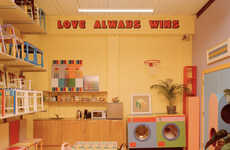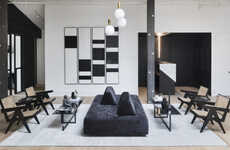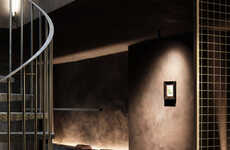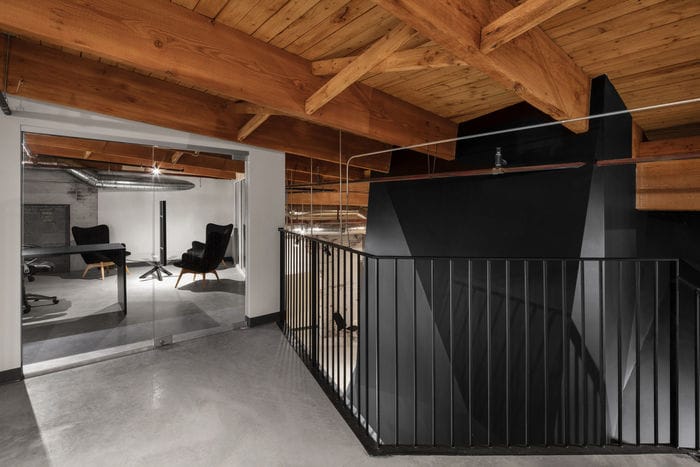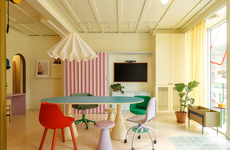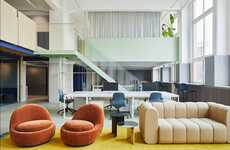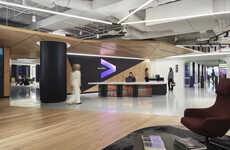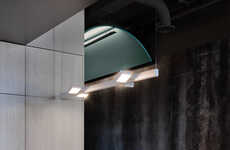
This Black and Yellow Office Space Prioritizes Collectivity
Mishal Omar — July 9, 2016 — Art & Design
References: delessard & officesnapshots
It is not just the stark colors of this black and yellow office that make it stand out.
Designed by 'Jean de Lessard -- Designers Creatifs' for the wireless LED technology company 'PixMob,' this office was built around the concept of "spatial recycling." In an effort to conserve and maintain the structure's prior function as a textile factory, the designers kept and designed wood and high ceilings to reflect the building's original purpose. The space has 45 workstations and only a handful of closed offices to ensure collectivity and collaboration. The black and yellow office was not designed with those colors on a whim -- they represent the "vibratory principle" of sound waves.
By contrasting the purpose of this tech company with traditional wooden elements in its office while still maintaining some references to technology, the designers have created an interesting and distinctive juxtaposition.
Designed by 'Jean de Lessard -- Designers Creatifs' for the wireless LED technology company 'PixMob,' this office was built around the concept of "spatial recycling." In an effort to conserve and maintain the structure's prior function as a textile factory, the designers kept and designed wood and high ceilings to reflect the building's original purpose. The space has 45 workstations and only a handful of closed offices to ensure collectivity and collaboration. The black and yellow office was not designed with those colors on a whim -- they represent the "vibratory principle" of sound waves.
By contrasting the purpose of this tech company with traditional wooden elements in its office while still maintaining some references to technology, the designers have created an interesting and distinctive juxtaposition.
Trend Themes
1. Spatial Recycling - There is an opportunity to repurpose existing structures and preserve architectural elements.
2. Collectivity and Collaboration - Creating workspaces that prioritize teamwork and collaboration can lead to increased productivity and creativity.
3. Vibratory Principles in Design - Exploring the use of design elements that reflect the principles of sound waves can create visually striking and engaging environments.
Industry Implications
1. Architecture and Interior Design - Incorporating spatial recycling and preserving architectural elements can be a key focus for architects and interior designers.
2. Technology - Tech companies can embrace the concept of collectivity and collaboration in their office spaces to foster innovation and teamwork.
3. Furniture and Design Manufacturing - Designing furniture and decor inspired by vibratory principles can offer unique and aesthetically pleasing products for consumers.
5.8
Score
Popularity
Activity
Freshness


